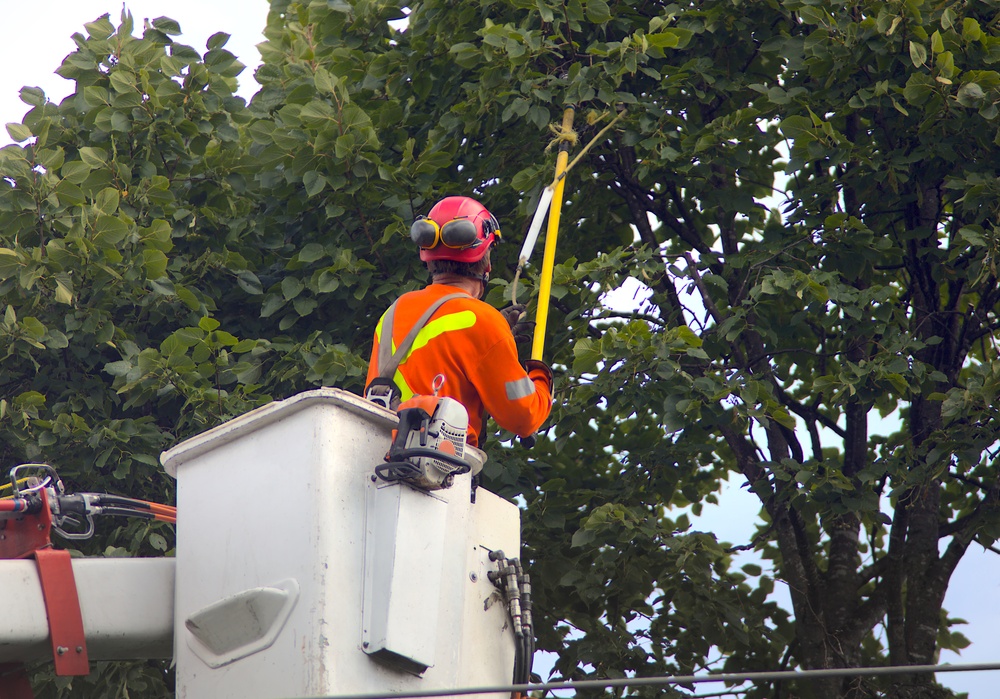The proper maintenance of your yard involves several routine tasks. One of your priorities is to maintain the optimal growth of the trees. Having a few or several trees with uncontrolled growth can affect the overall curb appeal, giving your yard an unkempt appearance.
It's best to be familiar with tree trimming and pruning and what sets them apart in maintaining the trees in your yard. If you initially believed that cutting trees was a single technique, it may be time to change your mindset and learn the difference between trimming and pruning. To give you a head start in keeping the trees in your yard tidy, check out Northern Beaches Tree Services and other similar service providers in your area.
Generally, trimming and pruning involves creating specific cuts to minimize the size of a tree on a property. At the same time, it also involves getting rid of any deteriorating or dead branches. The task may prolong the lifespan of a tree and ensure good growth. In most cases, trees require a trimming or pruning session at least once or twice a year to keep them in good shape.
Difference Between Tree Trimming And Pruning
As mentioned, most assume tree trimming and pruning are the same because both techniques share a strikingly similar outcome. However, there are differences between the two.
Trimming mainly focuses on the overall appearance of the tree. Tree trimming is necessary if you have poorly maintained trees with towering growth or if they already reach your home's roof. On the other hand, the pruning technique involves the execution of precise cuts, with the main objective of protecting against pests and ensuring healthy growth. Generally, the task requires loping shears to remove weak branches.
However, if a tree in your yard is sickly or severely damaged due to an adverse weather event or pests, it may be best to consider a tree removal service instead.
Tree Trimming
Trimming mainly focuses on the appearance or aesthetics of the tree, creating the ideal shape to your liking. Leaving a tree to grow on its own can result in unruly growth as the branches develop in different directions. Furthermore, if you overlook the need for regular trimming, the uneven growth leaves your trees with a distorted form. Generally, the trimming task involves cutting overgrowing branches to promote healthy growth.
Maintaining the trees on your property with regular trimming can provide several benefits. For one, it can boost the overall health of the trees. Trimming trees can improve the absorption of nutrients and expose them to direct sunlight. A towering tree with a wide expanse cannot absorb crucial nutrients from the soil, which can affect overall health. When you perform regular cutting of the branches, it allows the tree to utilize the available nutrients in the best way possible.
Likewise, tree trimming encourages better growth. Plants use the process of photosynthesis to convert sunlight, carbon dioxide, and water into energy and oxygen. Most leaves aren't exposed to sunlight if you have an overgrown tree, diminishing the process. Trimming allows a tree to gain more exposure to sunlight, boosting photosynthesis which, in the long run, ensures better health.
If you lack the knowledge and tools to trim correctly, a tree can be at risk for damage. Making unnecessary cuts to a tree allows open wounds, making the tree prone to pests and infection. Knowing the proper trimming technique may be best to ensure the best outcome and minimize the risk of damage.

Tree Pruning
Pruning mainly focuses on the selective removal of sick or dead branches, including those that constantly rub against each other or even the stubs, for healthy growth and to improve the structure.
Allowing the light and air to circulate throughout the tree by cutting the canopy can help improve the foliage while at the same time lowering the chances of diseases.
If you have deciduous trees, it's best to perform pruning during late fall and early winter. During these times of the year, the exposed branches make it easy to scrutinize the tree's appearance.
When pruning sick or dead tree branches, do it right away. Don't wait to perform the task until fall or winter since it can lead to potential damage or infection. Remember to disinfect or dip the tool you use in a bleach solution to prevent the spread of disease.
Performing regular pruning of the trees in your yard provides several benefits. Think of it as an investment to maintain health and appearance while keeping your property safe.
Tree pruning structures the tree's growth to create a streamlined look and improve the landscape. It also allows you to eliminate any unsightly branches that are sick, damaged, or dead to keep your trees aesthetically pleasing. Doing so keeps your property safe from potentially damaged or unhealthy branches falling on your house, family members, or passers-by.
Furthermore, routine pruning exposes the trees to sunlight, promoting better circulation of air and sunlight for healthy growth. These factors are crucial in promoting long-term health.
It has its share of risks if you decide to do the pruning task yourself. When you have trees with towering heights, you need to climb to tall heights to cut down the branches. It would be best to observe the proper safety measures to avoid putting you at risk for injury or damage to property.
An incorrect cut, such as creating one too close or too far from the trunk, can result in irreversible damage. In most cases, the wrong cuts can lead to decay, resulting in the tree's death.
Keeping the trees in your yard in good shape for years requires routine care. Basic cutting techniques such as trimming and pruning will play a key role in keeping trees healthy and maintaining a good appearance. By knowing the difference between the two techniques and how to perform them correctly, you can keep all the trees on your property in good form, healthy, and with a longer lifespan.
Publisher Website: https://www.northernbeachestreeservices.com.au/